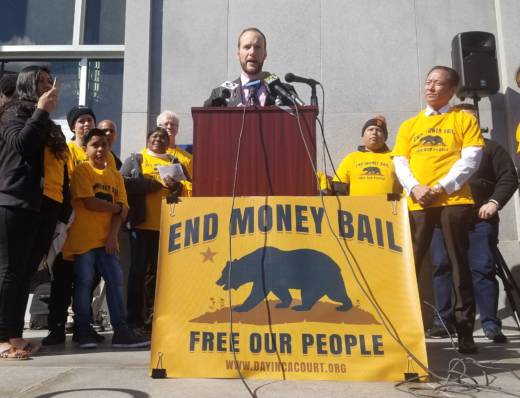“Not only does he not follow the rules, but he commits more crimes,” Burris said during a hearing on the case Tuesday. “The idea of releasing him to another residential facility for seniors creates a fox-in-the-hen-house scenario.”
Macbeth said Humphrey is facing a 41-year-to-life sentence.
Judge Brendan Conroy, however, agreed Thursday to grant Deputy Public Defender Anita Nabha’s request that Humphrey be released to a Mission District residential recovery facility for seniors, which has already agreed to take him in. He will remain out of custody — as long as he abides by the conditions of his release — while he awaits trial.
“He has no police contact for 11 years prior to this incident,” Nabha argued. “The suggestion that he has not been able to be successful on parole is just not true.”
Conroy said from the bench that if his only choice was to release Humphrey on his own recognizance or detain him, Humphrey would remain in jail.
“This is a detention case,” Conroy said. “This isn’t about poor people being kept in jail.”
The judge noted the seriousness of the charges against Humphrey, but he also said that new options for conditions on his release have emerged in the past year. That includes the option for free electronic monitoring through the city’s Sheriff’s Department.
Humphrey will be put on house arrest, meaning he can’t leave the treatment facility, will be monitored electronically 24 hours a day and be subject to searches, Conroy ruled. Additionally, he is to stay away from the victim in the case and the Turk Street residential senior facility.
After issuing his ruling, Conroy told Humphrey that he’d “become somewhat of a symbol.”
“A lot is on your shoulders,” Conroy said. “I wish you all the best.”
Outside of court, Nabha said of Humphrey, “He’s obviously very happy that he’s going to be able to continue this fight outside of jail and continue to work on his health and progress.”
“This is a monumental decision today by the judge, and we’re very grateful that he is abiding by the new law and he’s recognizing that this case, Mr. Humphrey’s case, changed state law,” Public Defender Jeff Adachi said.
After his 2017 arrest, Humphrey’s bail had initially been set at $600,000 based on the state’s bail schedule, but a judge eventually lowered it to $350,000 after the San Francisco public defender’s office argued that the initial amount was excessive and that Humphrey did not pose a risk to the public.
In January, after reviewing Humphrey’s case, the state appeals court ruled that a judge must consider the defendant’s ability to pay when setting bail. Setting bail higher than a person can afford effectively jails the defendant for being poor, the ruling concluded.
While San Francisco District Attorney George Gascón has been in favor of changing the money bail system, he sent a letter last month to the state Supreme Court requesting clarification on conflicting appellate rulings, and arguing courts should still be allowed to consider a threat to public safety when setting bail amounts.
The District Attorney’s Office has championed the use of an algorithmic “public safety assessment” tool, which analyzes a defendant’s criminal history and current charges and measures it against thousands of other cases. The tool then makes a recommendation on whether a defendant should be held in jail or released.
“We’re trying to make these very important decisions based on science and data, not money,” district attorney spokesman Max Szabo said, noting that the tool recommended Humphrey remain in jail. “We believe that’s a safer approach, but that doesn’t mean everybody gets out either.”
It looks like Kenneth Humphrey will be released, however, by Wednesday. The state Supreme Court has until the end of this month to decide whether it will weigh in on the constitutionality of monetary bail, according to Boudin.
This post contains reporting from Bay City News.
Alex Emslie of KQED News contributed to this post.
